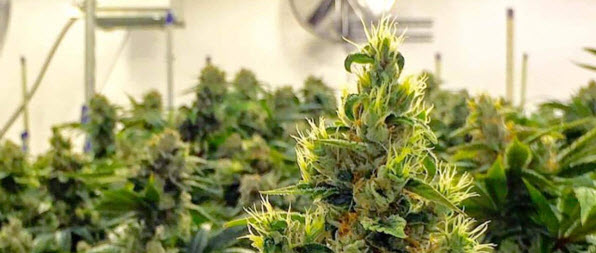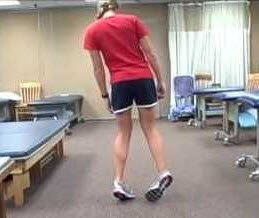Cannabis for Ataxia
Ataxia is usually a sign of an underlying condition. It affects different movements throughout the body, such as speech difficulties, swallowing, walking, and eye movement.
It’s estimated that around 150,000 individuals in the United States are affected by ataxia. Several conditions may cause ataxia, such as alcohol and substance abuse, tumors, stroke, brain degeneration, cerebral palsy, multiple sclerosis, certain medications, autoimmune diseases, head trauma, and inherited genes. The treatment for ataxia will depend on the cause. Conventional treatments include canes or walkers which may help patients achieve independence; other kinds of treatments include speech therapy, occupational therapy, physical therapy, and aerobic exercise.

How can cannabis help?
Spinocerebellar ataxia (Autosomal dominant ataxias)
Spinocerebellar ataxia is a hereditary disease and is also the most common hereditary cause of progressive neurodegenerative disease. In some cases, if the condition isn’t treated early on, spinocerebellar ataxia may be fatal. It begins with progressive issues with walking or one’s gait, but after some time will lead to issues with facial or hand coordination. The lack of coordination in the patient’s facial muscles will eventually lead to blurry vision, slurred speech, spasticity, and tremors particularly in the hands. Despite these physical symptoms, patients with spinocerebellar ataxia still maintain mental function which may cause depression, sleep changes, and other psychological problems that may interfere with the quality of life.
There is no known cure for spinocerebellar ataxia; over time the disease progresses and will eventually get worse. Cannabis can help with these symptoms of spinocerebellar ataxia:
- Spasticity: Patients use medical cannabis for the treatment of muscle spasticity. In a 1982 study, 21 out of 43 respondents with multiple sclerosis and spinal cord injuries that caused muscle spasticity reported that cannabis use helped reduce spasticity. In another 1997 study, almost every patient in a 112-participant survey reported that cannabis use decreased both pain and muscle spasticity.
- Neuroprotection: Neurological damage and diseases may be challenging to cure completely, but cannabis has been shown to have neuroprotective properties. It also reduces inflammation and helps regenerate brain cells, which may benefit patients of ataxia especially in slowing down the progression of the disease.
- Pain: Cannabis is proven scientifically effective at treating pain caused by a variety of different factors. For patients struggling with pain caused by spinocerebellar ataxia, cannabis offers a safer way to manage pain without resorting to opioids.
- Insomnia: Both THC and CBD have been proven to help increase the overall duration of sleep in insomniacs. Studies also show that cannabis may promote deeper sleep as well as improvement in breathing when taken before sleep. Patients with spinocerebellar ataxia can benefit from deeper and more peaceful sleep that they otherwise wouldn’t be able to get because of the symptoms associated with their condition.
- Depression: Living with ataxia can cause depression because the symptoms can hinder the patient’s ability to live their life to the fullest. Instead of taking prescription antidepressants, patients can turn to cannabis to regain a sense of optimism; relax, and feel happy.
- Loss of appetite: Certain cannabis strains are known to induce appetite. This can be extremely beneficial for ataxia patients due to the fact that some may have difficulty eating and swallowing, which will prevent them from consuming the nutrients that they need to strengthen their system and slow down the progression of their disease.

Friedreich’s ataxia (Autosomal recessive ataxias)
Friedreich’s ataxia is another form of the disease that is characterized primarily by the degeneration of the spinal cord and peripheral nerves. This form of ataxia is caused by a genetic mutation, and disorder is recessive. Other symptoms of Friedreich’s ataxia include speech problems, gait disturbance, coordination and reflex problems, scoliosis, and fatigue. Complications that may arise from Friedreich’s ataxia include heart failure or heart disease, and diabetes.
The progression of Friedreich’s ataxia varies from person to person. Progression and symptoms generally worsen due to the presence of free radicals in the body, since they can destroy cells and weaken the immune system. For this reason, scientists suggest treatment with antioxidants such as Vitamin E and coenzyme Q10. In some cases, surgery may be required to slow down or help manage the inevitable progression of the disease.
Cannabis can help manage some symptoms of Friedreich’s ataxia:
- Antioxidants: Studies show that cannabis contains valuable neuroprotective antioxidants. When taken with other vitamins, cannabis may effectively slow down the progression of Friedreich’s ataxia.
- Muscle spasms and relaxation: Topical application or oral consumption of cannabis is widely used to help manage several muscle-related ailments. Patients with Friedreich’s ataxia may rely on cannabis to treat localized pain and loosen up tight muscles especially those in the spine.
- Cardiovascular health: Microdosing cannabis has been shown to be effective in preventing heart disease. Studies also show that cannabis can help protect the heart.
- Diabetes: A leading killer around the world, diabetes is a condition that big pharma has capitalized on. However, this is yet another condition that cannabis may treat and prevent thanks to its anti-inflammatory properties.
Have you used cannabis to treat ataxia? Share with us in the comments below.
OTHER STORIES YOU MAY ENJOY...
CANNABIS FOR STROKE PREVENTION, READ THIS...







